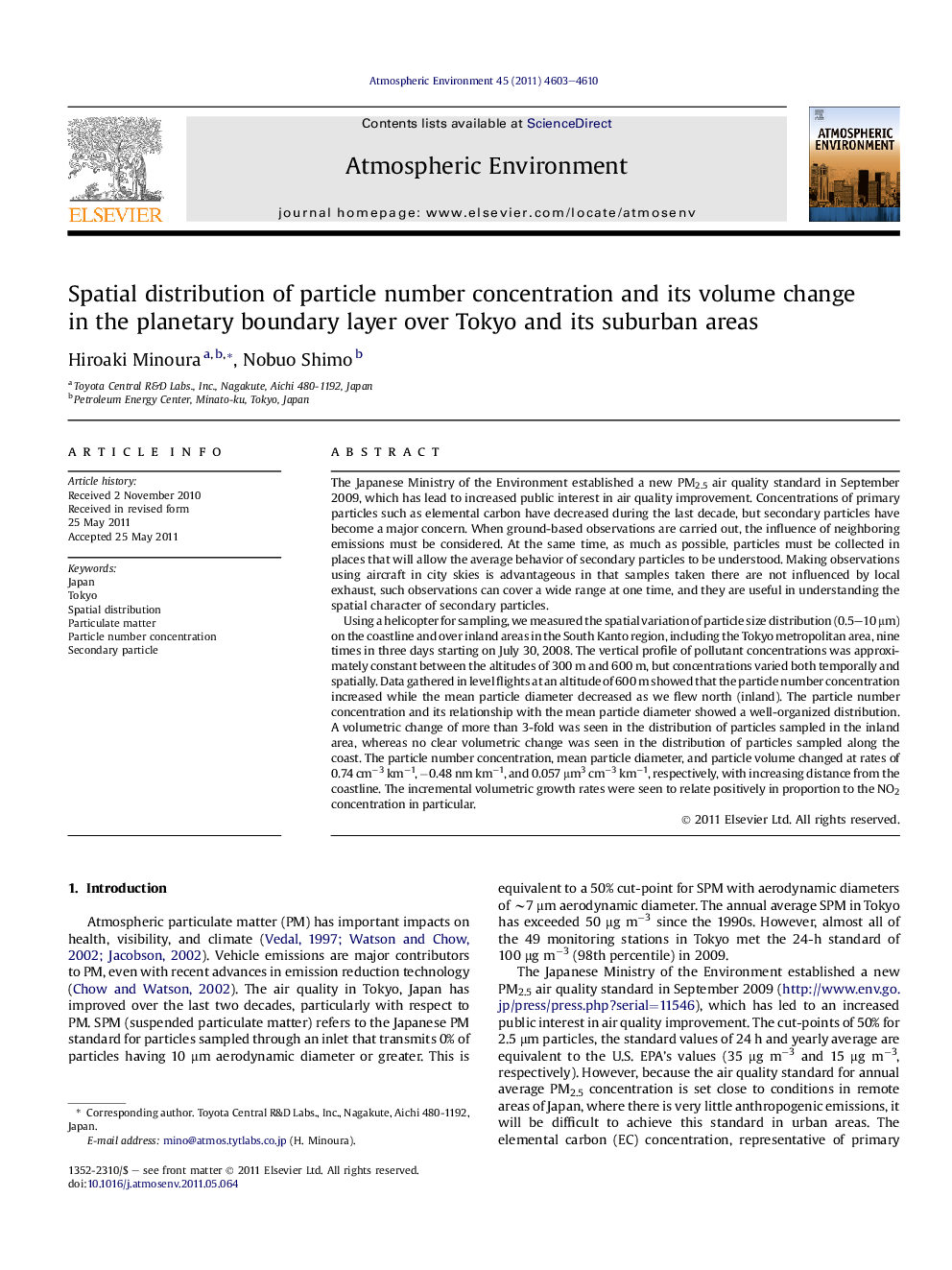| Article ID | Journal | Published Year | Pages | File Type |
|---|---|---|---|---|
| 4439755 | Atmospheric Environment | 2011 | 8 Pages |
The Japanese Ministry of the Environment established a new PM2.5 air quality standard in September 2009, which has lead to increased public interest in air quality improvement. Concentrations of primary particles such as elemental carbon have decreased during the last decade, but secondary particles have become a major concern. When ground-based observations are carried out, the influence of neighboring emissions must be considered. At the same time, as much as possible, particles must be collected in places that will allow the average behavior of secondary particles to be understood. Making observations using aircraft in city skies is advantageous in that samples taken there are not influenced by local exhaust, such observations can cover a wide range at one time, and they are useful in understanding the spatial character of secondary particles.Using a helicopter for sampling, we measured the spatial variation of particle size distribution (0.5–10 μm) on the coastline and over inland areas in the South Kanto region, including the Tokyo metropolitan area, nine times in three days starting on July 30, 2008. The vertical profile of pollutant concentrations was approximately constant between the altitudes of 300 m and 600 m, but concentrations varied both temporally and spatially. Data gathered in level flights at an altitude of 600 m showed that the particle number concentration increased while the mean particle diameter decreased as we flew north (inland). The particle number concentration and its relationship with the mean particle diameter showed a well-organized distribution. A volumetric change of more than 3-fold was seen in the distribution of particles sampled in the inland area, whereas no clear volumetric change was seen in the distribution of particles sampled along the coast. The particle number concentration, mean particle diameter, and particle volume changed at rates of 0.74 cm−3 km−1, −0.48 nm km−1, and 0.057 μm3 cm−3 km−1, respectively, with increasing distance from the coastline. The incremental volumetric growth rates were seen to relate positively in proportion to the NO2 concentration in particular.
► Using an aircraft, secondary PM behavior was measured in South Kanto, Japan. ► The PM number and mean diameter showed well-organized distribution. ► A volumetric change in PM was seen in the inland area, but not in the coast area. ► The increment tendency of the volume growth rates was seen with NO2 concentration. ► The increase ratio of PM number and volume was obtained as a function of distance.
